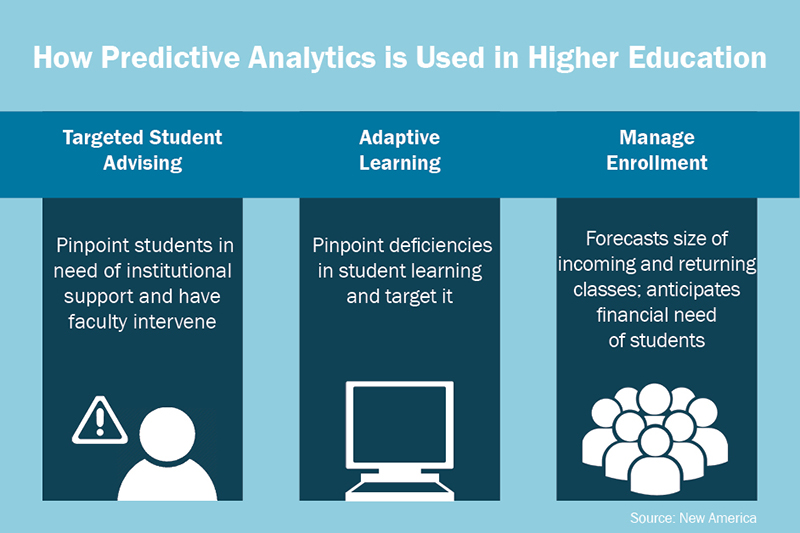Forty-one percent of universities, including UT–Austin, are using predictive analytics for targeted student advising, adaptive online coursework or forecasting class size and financial aid need, according to a research paper released by think tank New America.
Manuela Ekowo, one of the paper’s researchers and policy analyst at New America, said when she started working on the paper she was interested in learning more about how universities were using
different analytical tools to support students of color, low-income students and first-generation college students.
“Predictive analytics [are used] to recruit students, to offer them financial aid, but also for powering the early alert system that helps identify students who may be at risk of either failing a course or dropping out of school,” Ekowo said. “Advisors intervene before those outcomes pan out.”
Data used by universities to predict success includes current student transcripts, past student transcripts and family income.
Predictive analytics are also used in adaptive online courseware, which is tailored to a student’s educational needs, Ekowo said.
Approximately 500 entering freshmen who are least likely to graduate are identified using predictive analytics and offered a spot in the University Leadership Network, which aims to help students graduate in four years, said UT-Austin President Gregory Fenves at the Board of Regents meeting Wednesday.
Through advising and leadership training, the program is able to help students graduate on time. Up to $20,000 in scholarships are also offered to students in the program, along with opportunities for on-campus internships, Fenves said in his presentation.
At the meeting Fenves said the program has been a success in helping underprivileged students who need financial assistance.
“It’s not who gets to go to college, it’s who gets to graduate once they’re in college and that’s the problem we’re starting to address,” Fenves said.
Predictive analytics are also used at UT to forecast four-year graduation rates, according to Fenves’ presentation. He also said the Class of 2017 ULN students have a 33 percent chance of graduating in four years, while the Class of 2017 non-ULN students have a 56 percent chance of graduating in four years.
Other universities have also used predictive analytics to great success, Ekowo said.
At Austin Peay State University in Clarksville, Tennessee, they have a course recommendation system, called Degree Compass, which uses predictive analytics to recommend courses to freshmen based on their high school transcripts, said Bill Persinger, executive director of public relations and marketing at APSU. For upperclassmen, courses are recommended based on past performance.
Persinger also said the system can accurately predict a student’s grade in a class using past data.
“In some cases it helped motivate students to beat the system,” Persinger said. “It’s become a critical component to us to help [students] get through in four years.”
Despite the success of the program, Ekowo said she still has concerns with increases in its usage by universities.
“We do have concern that if [predictive analytics] become heavily used, that they can potentially become restrictive, where students don’t have the option other than to do what the recommended system is saying that they should pursue,” Ekowo said.





















